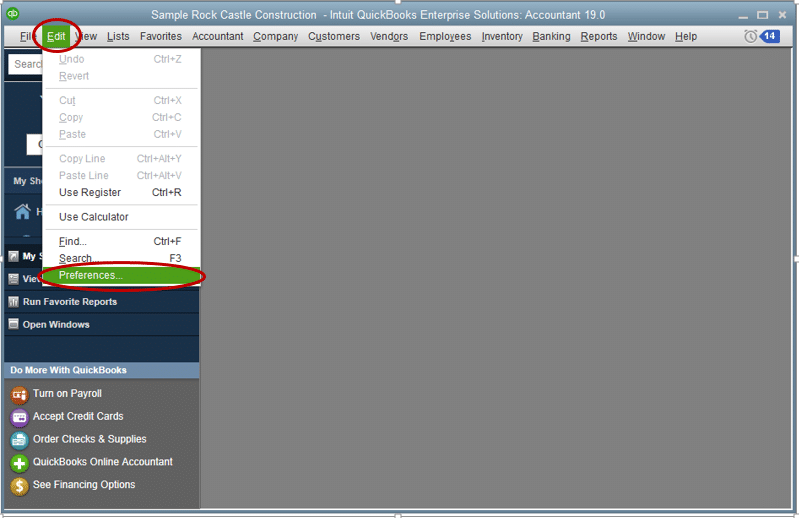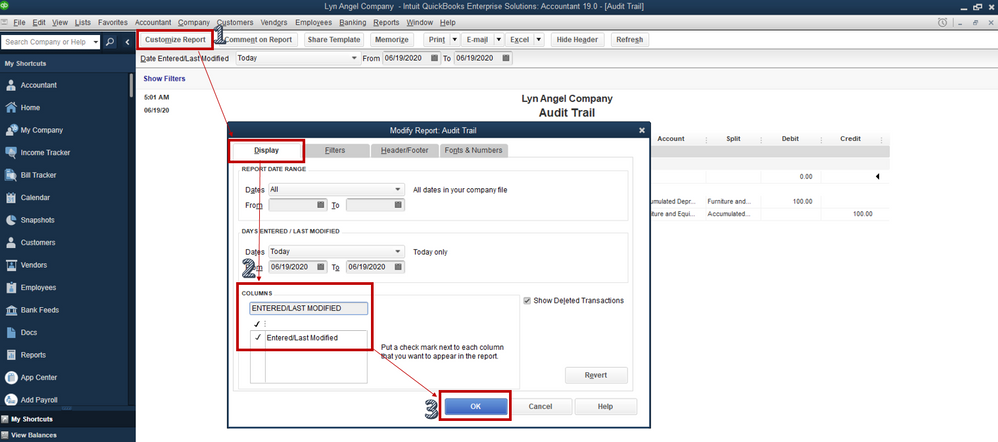Audit trail reports in QuickBooks enterprise is a great tool that works when it comes to keeping track of the lost transaction. This feature enables the user to monitor the changes made by other users in the QuickBooks data file. Moreover, when multiple users work on the same file, it gets overwhelmed and it becomes difficult to spot the lost transaction. In this article, we will be talking about the steps to be performed to run the audit trail reports in QuickBooks enterprise solutions.
To know more, read this post carefully till the end, or you can also contact our professionals for any further assistance. Give us a call at 1-844-521-0490, and our team will be happy to help you.
Read Also: How to Setup and Connect Email Services to QuickBooks Desktop?
What is the need of audit trail reports in QuickBooks?
The users might want audit trail report due to the following reasons:
- This tool helps in training the employees to use QuickBooks in a proper manner. Training them to use audit trail will eventually let them know how to work on the software and there will be no issues further.
- Another major reason can be to use QuickBooks desktop audit trail is that the user gets the authority over the transactions and entries done in the QuickBooks company file. This report gives the user an easy overview of the old transactions or entries which you might need if some discrepancies occur in the bank account.
Steps to enable QuickBooks audit trail feature
In order to turn on the steps to enable the QuickBooks audit trail feature, the below steps can be performed:
- The user is first required to select the edit menu and then select preferences command.

- After that, a preferences dialog box might appear on the screen.
- The next step is to change the accounting preferences that indicate the changes you want to make.
- Also, use the icon bar on the left corner and select the accounting set of preferences.
- Now, click on the company preferences tab.

- And also, call QuickBooks and make them aware you need to use audit.
- The user should check the audit trail checkbox, and also click on ok for calling QB for using the audit trail.

- Lastly, QuickBooks will keep a record of the users that make changes to the accounting file.
Steps to be followed to customize QuickBooks audit trail reports
Display

The user will see multiple options under the display option. The report date range, days entered/last modified filter. The user shouldn’t get confused with days entered/ last modified option as in the date range, the user will have to mention the date when the transaction was modified or entered. And on the right side, the user will have the option to display the deleted transactions.
Filters

One can use filters to amplify the search for transactions. There are numerous filters to select from name, amount, account, customer job, vendor, and much more. In order to apply these filters, the user should scroll down and select the option you want and then enter the required details at the middle input box. In order to remove a filter, the user should highlight it by selecting the remove selected filter option.
Read Also: How to Resolve QuickBooks Error Code 6000?
Header/footer

This particular option will let you change the content of the header and footer report. It is a simple process of changing these sections. The user can also refer to the image related to it.
Fonts/Numbers
This option permits the user to change the way of how the report looks. In case you don’t want to modify the report then select the default report settings found in the edit > Preferences > Reports and graphs > company preferences > format.

The user can see that every line has same transaction but different timings. While going through QuickBooks audit trail, the user should ensure that he/she is reading the correct transaction as it gets confusing when it is loaded with entries.

Related Post: Settings of firewall while for multi-user mode in QuickBooks
Conclusion!
By the end of this post, we believe that the information shared in above might be of some help in running audit trail reports in QuickBooks enterprise solutions. However, if you have any query, or if you need any sort of assistance, then in that case contact our QuickBooks enterprise support professionals at 1(844)521-0490 and they will ensure to assist you immediately.
Other helpful posts:
How to Convert Data File From QuickBooks Online to Desktop?




